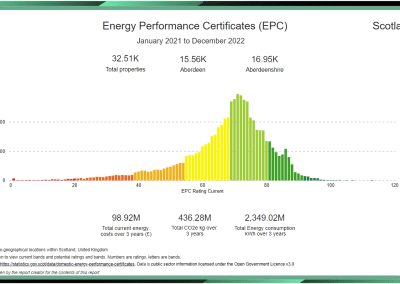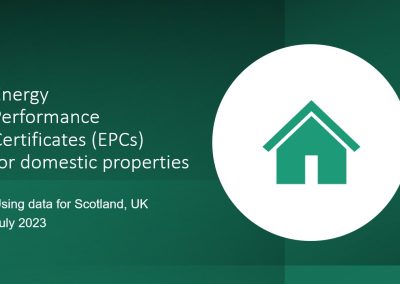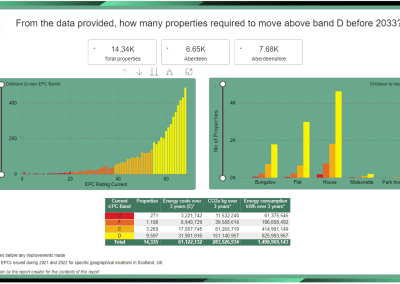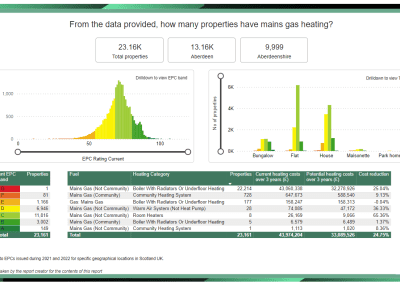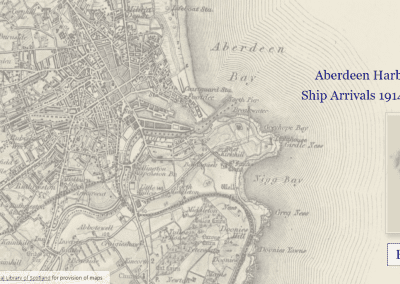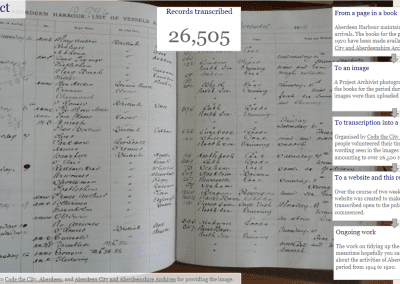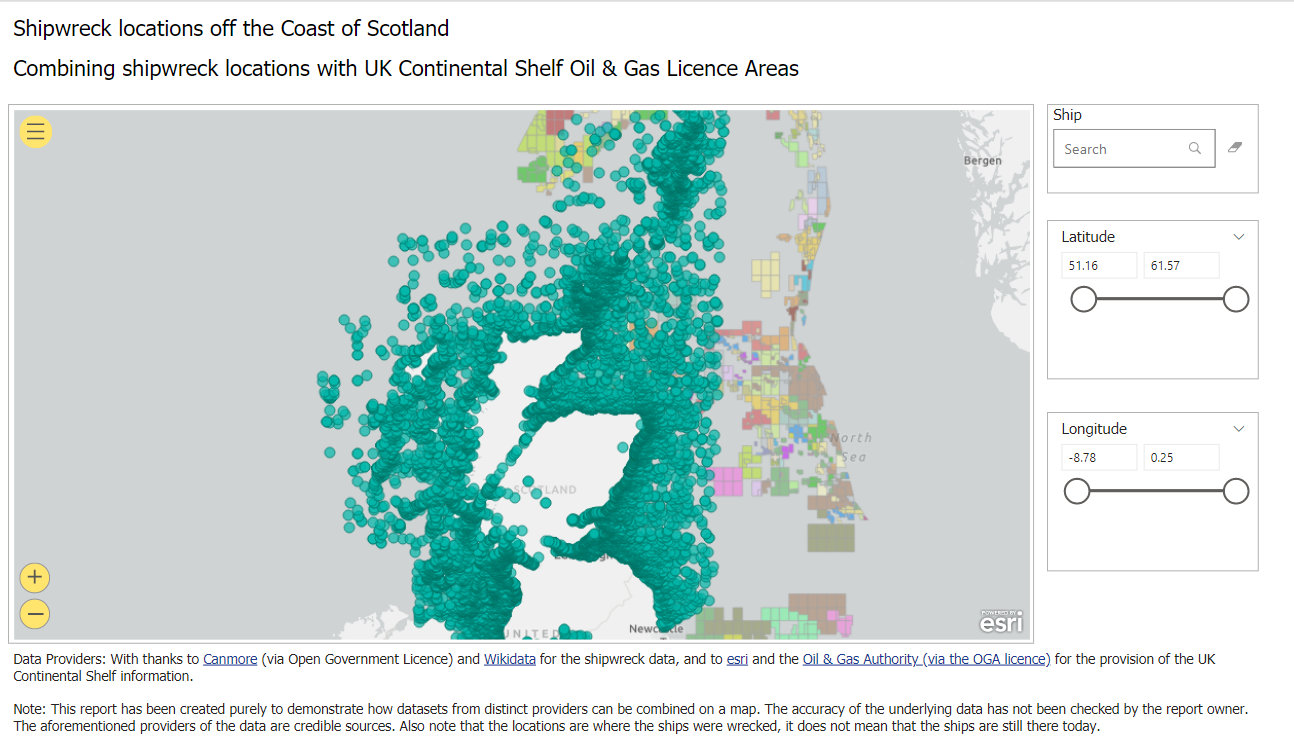Community Projects
Projects below were created either as part of a community hackathon or for the purpose of delivering a talk on the topic of the report.
Project listed on Microsoft’s Data Stories Gallery
Analysing Domestic Housing Energy Performance Certificates (EPC)
Background
Often the reason for making improvements to an existing building is to improve its energy efficiency. To aid with measuring energy efficiency a property is assessed and assigned a rating in an Energy Performance Certificate (EPC). The rating is assigned to a band ranging from A to G, with A being the most energy efficient and G being the least.
The project
For EPCs issued for during the years 2021 and 2022 in Scotland, UK, the data for two geographical areas (being Aberden and Aberdeenshire) are analysed and put into diagrams to aid with answering three questions. These questions are based upon proposed legislative changes in Scotland. The questions consider how many properties within the data set will require improvements to:
– bring them within the proposed minimum energy efficiency bands or
– satisfy the requirement to move away from fossil fuel boilers.
The report created can be found here.
Data
The data used in this project is public sector information licensed by the Scottish Government under an Open Government Licence v3.0. The original property references have been removed and replaced by an index column (named Reference No.) in the report.
Project listed on Microsoft’s Data Stories Gallery
By bringing together a community of individuals with different skills, organising hackathons and making the data open, the ship arrival records for Aberdeen Harbour, UK for the period from 1914 to 1920 have been opened up for anyone to explore and use.
The Project: From Aberdeen Harbour’s physical records, the pages were photographed, the words on the images were transcribed into Google Sheets, a website was created to access the data and this data story was borne.
From the data story you can see the types of ships coming into the Harbour, the imports required to sustain the region, the ports from which the ships set sail for Aberdeen, and from comments made in the records by the staff you can feel their pride in ‘firsts’, their joy when celebrating events, and their profound sadness at the devastations of war.
A link to the report can be found here.
Huge thanks to all the transcribers, Code the City Aberdeen, & Aberdeen City and Aberdeenshire Archives for all time, effort and work which has gone into this project.
Further work is ongoing to tidy up the data so this project is not yet complete, but meantime the achievements by a community with a shared interest coming together to make this project happen can be enjoyed.
A video showing how to navigate the tables and bar charts can be found on YouTube.
A video demonstrating how to pull in extracts from Wikipedia, as used on page 4 of this project, can be found here on YouTube.
Project listed on Microsoft’s Data Stories Gallery
Description
Provides the ability to run a query written for Wikidata and create a dataset from the output for import into Power BI.
Example
Taking Wikidata relating to the location of where ships were wrecked off the coast of Scotland UK and plotting these locations on a map provided by esri which shows oil & gas licencing blocks on the UK Continental Shelf. This provides an example of how easy it can be to combine two different resources into one map.
YouTube
Videos demonstrating the techniques used in this project can be found at:
Create a Wikidata Query – example using Shipwrecks data
Map Wikidata in an R Shiny App – example
Bring Wikidata into Power BI using a simple R script – example
Data for this project
The open data used in this project was uploaded to Wikidata during a hackathon held in November 2020. More information on the hackathon can be found in the following blog:

